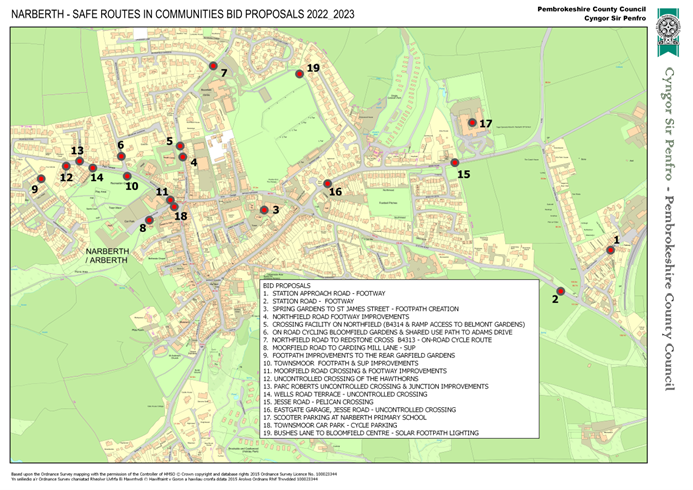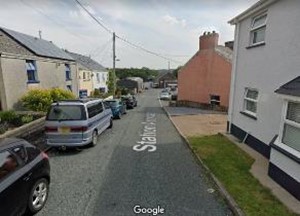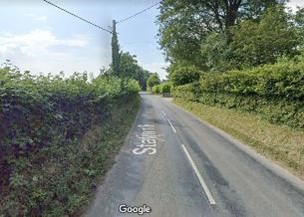Safe routes in communities grants: guidance for applicants 2024 to 2025
How local authorities should apply for funding to improve road safety and walking and cycling routes to schools.
This file may not be fully accessible.
In this page
Introduction
This guidance confirms the priorities that Welsh Government will support through the Safe Routes in Communities grant to local authorities in Wales in 2024 to 2025.
The guidance also sets out how local authorities should submit applications in line with these priorities, for consideration by the Welsh Government, and how they will be assessed.
In your applications you must demonstrate that you have followed the Welsh Government transport appraisal guidance (WelTAG).
WelTAG is currently being updated.
The application forms reflect the new WelTAG approach.
Outcomes
The Well-being of Future Generations (Wales) Act 2015 requires public bodies to think more about the long-term, to work better with people, communities and each other, look to prevent problems and take a more joined-up approach.
The 2015 Act, places a duty on public bodies to seek to achieve the well-being goals and objectives in everything they do.
Llwybr Newydd: the Wales transport strategy (WTS) is our strategy for the future of transport in Wales. It sets out our ambitions for the next 20 years and our priorities for the next 5 years. This forms the basis of the grant objectives.
In your applications you must demonstrate that you have developed your proposal using the 5 ways of working and that your proposal maximises your contribution to the WTS ambitions that are aligned to the well-being goals.
In your applications you must demonstrate how your proposals will meet these grant objectives.
Grant name: Safe Routes in Communities
Grant objectives:
- increase levels of active travel among children travelling to school and in the wider community
- improve the liveability of communities
- improve the environment for walking, cycling and scooting around schools
Eligibility for capital funding
Subject to confirmation of budgets, the indicative total funding available for Safe Routes in Communities schemes across Wales for financial year 2024 to 2025 is expected to be approximately £5,000,000.
School streets
The Welsh Government is eager to support the development and implementation of School Street initiatives.
In the financial year 2023 to 2024, local authorities were able to apply for funding for a school streets feasibility study in their area, to identify possible school street schemes for future years' funding.
Following on from this work, local authorities can apply for continuing development funding, or submit an application for the implementation of a school street scheme.
We are currently developing guidance to help support local authorities identify and explore potential school street schemes that they wish to take forward.
School Street measures can also be incorporated in a wider Safe Routes in Communities scheme.
Scheme applications
Local authorities are invited to submit up to 3 applications for individual schemes or School Street packages. These include any existing multi-year schemes, and any application for continuing school street development funding.
All schools which are included in schemes must have an active travel school plan, or you must be able to demonstrate that a plan is being developed. A toolkit, developed by Sustrans on behalf of Welsh Government, has been created to assist schools with this work. Support and guidance are available on the Sustrans website.
Primary schools who are benefiting from Safe Routes in Communities funding must also commit to participating in the all-Wales Hands Up Survey, conducted by Public Health Wales. An overview of last year's survey is available on the Public Health Wales website.
Schemes that are located in designated localities under the Active Travel Act should be on active travel routes that have been identified on the submitted / approved active travel network map, and a reference must be given. We also allow applications for schools that are not in designated localities under the Active Travel Act, for example in more rural areas.
Safe Routes in Communities schemes are most successful where they have been developed with close involvement of pupils, parents, school staff and the wider community. We want to see involvement and collaborative design from the early stages of scheme development, wherever possible. We therefore expect schemes put forward for funding to provide evidence of involvement already undertaken, or a plan for involvement.
If you are applying for funding for design and construction within the same financial year you must submit your detailed designs as soon as they are available to Welsh Government for consideration, and before you begin construction.
Please note that we will no longer provide funding for 20mph schemes through Safe Routes in Communities due to the implementation of the default 20mph speed limit in most built-up areas in Wales, which came into force in September 2023. Local authorities will continue to receive funding for this work via the 20mph grant.
Funding will only be granted where scheme design reflects the Active Travel Act guidance. Where it becomes clear through scheme development that deviation from the guidance, or the submitted designs, is deemed necessary, then this should be brought to the attention of the active travel team at the earliest opportunity.
When designing schemes, local authorities must also consider their responsibilities under Section 6 –The Biodiversity and Resilience of Ecosystems Duty under the Environment (Wales) Act 2016. The duty requires that public authorities must seek to maintain and enhance biodiversity so far as consistent with the proper exercise of their functions, and in so doing, promote the resilience of ecosystems.
For example, this is highly relevant to the treatment of verges and planting schemes as part of transport projects. Guidance on the Duty can be found here: Environment (Wales) Act 2016: biodiversity and resilience of ecosystems
The Welsh Government will consider schemes that will take up to 3 financial years to complete. Total scheme costs must be outlined at the beginning of the project and funding will be subject to year-to-year agreement.
Schemes taking several years to complete, if successful, will be prioritised for funding in subsequent years for the duration of the scheme, subject to grant funding being available and satisfactory progress being made.
Local authorities can work together on their applications. The lead local authority must be identified for each scheme. Funding would be allocated to the lead local authority.
We will fund works and pre-works for capital schemes and the cost of scheme monitoring and evaluation can be included. Schemes where only pre-works will take place will also be eligible for consideration for funding.
Applications for new schemes can be made for single projects or for a package of related projects. Applications for a package of projects should contain a costed list of the associated projects in priority order.
Funding will be allocated up to the amount awarded for actual eligible expenditure incurred on an accepted scheme. Funding will be capped at the level of the award and the local authority will be required to carry the risk of any overspend that may occur.
Where increased costs arise due to exceptional circumstances, outside the local authority’s control, Welsh Government may consider making additional funding available.
Local authorities will be expected to deliver the schemes accepted in accordance with their applications. Reports on progress will be required at intervals throughout the 2024 to 2025 financial year and further information will be included in the award letter.
Relevant Welsh Government officials or their nominated representatives may request meetings or site visits to discuss scheme progress as considered appropriate. Failure to demonstrate appropriate progress with delivery may result in funding offers being withdrawn and funding claimed up to that point being recovered from a local authority.
Schemes that include match funding will attract additional scores in the appraisal process, with schemes that demonstrate greater levels of match funding scoring higher.
Applications must clearly identify the levels and sources of available match funding and confirm this will be in place to ensure the completion of the works within the 2024 to 2025 financial year. Match funding may be from internal or external sources and may include officer time.
All schemes should be ranked in number order of priority.
Where multi-year schemes were given indicative approval in 2022 to 2023 or 2023 to 2024, an application form will be required to update the information provided previously. This should highlight changes to scheme design, timeframes and the amount of grant required.
Should the application vary considerably, this will be appraised as if it was a new scheme and will not automatically attract funding.
Grant terms and conditions
Funding will be made direct to local authorities and will be available for 2024 to 2025 only. Local authorities should note that Welsh Government is unable to give a commitment for grant support after 2024 to 2025.
Other than in exceptional circumstances by prior agreement, schemes submitted for works funding in 2024 to 2025 should demonstrate that all land issues will be resolved, and orders or required permissions are in place to allow works to progress.
While Welsh Government is prepared to fund the cost of land purchase, funding will not be provided in respect of compensation claims arising from the land purchase or from the project itself.
The provision of capital support to schemes is conditional upon local authorities’ commitment to meet future revenue and maintenance costs.
Monitoring and evaluation
All schemes and educational initiatives must be monitored and evaluated. Local authorities are able to include the costs of monitoring for up to 3 years within their funding applications, but these must be clearly identified.
Schemes must be monitored for 3 years post completion and reported to the Welsh Government annually. Further guidance will be provided on reporting processes.
Promotion
Applications should include costs associated with the promotion of schemes, including signage, materials and events, for up to 3 years after scheme completion. These must be clearly identified.
Application process documentation
Local authorities should submit their applications using the relevant template application forms. All schemes will be assessed through an appraisal process.
Local authorities will be responsible for ensuring that delivery remains on schedule, and reporting any change to the works programme and/or spend profile.
Applications for capital schemes must include a plan showing the scheme in as much detail as possible at application stage (including technical drawings) and a map showing the scheme context. An OS GB grid reference must also be included. An example of best practice can be found in Appendix 1.
Supporting documentation will be considered as follows:
- maps and plans in respect of capital applications (these must clearly show the proposed measures)
- other supporting information you feel is essential to the bid (must be kept to a minimum and be anonymised, where applicable).
Appraisal process
Applications will be considered by a panel of Welsh Government transport officials and relevant external stakeholders as appropriate.
Final decisions on funding will be made by the Minister and Deputy Minister for Climate Change.
The assessment criteria for the grants are available separately – see Grant Assessment Criteria 2024 to 2025. The final funding recommendations will also take into consideration to which extent the local authority has delivered against its forecasts in relation to Safe Routes in Communities grant in recent years.
Deadline for submissions
Applications must be submitted by 26 January 2024.
Electronic copies must be submitted to the relevant Welsh Government contact listed below via transportplanning@gov.wales – please keep appendices’ to a minimum. All documents should be submitted in a Word or PDF format.
No additional or revised information will be accepted after the above date, unless requested by the Welsh Government.
Welsh Government contacts
Safe Routes in Communities
Amy Henley
Active travel policy officer
transportplanning@gov.wales
03000 251071
Appendix 1: Safe routes in communities guidance note
Scheme map
Below is an example of a suitable map which details the different elements of a scheme. Each element is numbered and can be referred to the below breakdown

Scheme description
Breakdown of elements:
Each element is identified by the relevant number from the map and includes a current photo and grid reference. This breakdown provides additional information on the current situation and what is included in the proposal.
Example 1: Footway to the station on station approach road
FR-NB011 - OS GB grid reference: SN 11968 14675

Improve the footway (DE001) which is intermittent and uneven with vehicles parking on the footway. Introduce an uncontrolled crossing point (DE036) at the junction with Kiln Park Road. There is no capacity to increase parking at the station as the limited number of spaces are utilised by businesses or residents. Over recent years the numbers of passengers utilising the train from Narberth has decreased. It is hoped that access improvements will reverse this trend. This proposal ties in with FR-NB016 and connects directly to the rail station.
Example 2: Footway Station Road B4314
FR-NB016 - OS GB grid reference SN 11897 14551

Station Road Narberth to Kiln Park Road - Introduce footway (DE001) and uncontrolled crossing (DE036). The scheme is the missing connection in the footway network in a key part of the town. It connects the town centre with the railway station and is on the pedestrian desire line to this important transport facility.
An example of a comment received from the Active Travel Common Place consultation regarding this proposal is shown below:
Station Road: There is no pavement between the end of the new housing along station road and the junction to Kiln Park Road. Many people have to walk on the road as there is no pavement. With two new housing developments along this road increasing the population there is a need for a safer route to and from the station. I have seen train users dragging suitcase trolleys along the road with traffic negotiating around the pedestrians.
